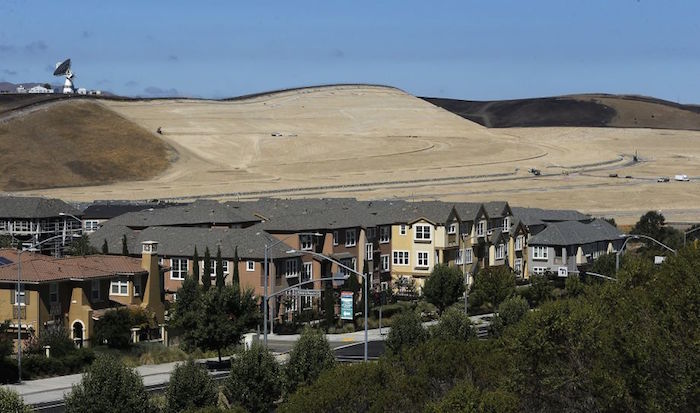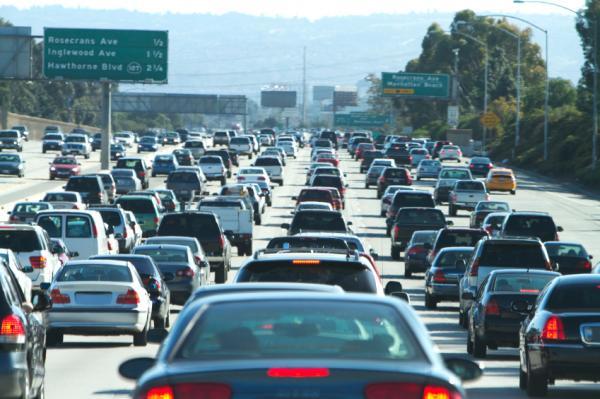In fact, 27 percent of the state’s population is foreign born as of 2016 according to the Census.
But California’s popularity has caused a huge crunch in affordable housing, where a downturn in employment or plain bad luck can make some people homeless because of the high cost of anything with four walls. Others who would like to buy a house simply can’t afford one. Supply and demand can get ugly.
Plus, from an environmental viewpoint, California’s 40 million residents make it highly overpopulated. Last year’s winter rainy season was intense and broke a brutal five-year drought. But a very dry fall this year makes another drought look like a real possibility. It’s curious how the environmentalists in the state never speak up about the obvious immigration-fueled overpopulation problem.
Below, new housing in the San Francisco Bay Area shows how open space is paved over to build more suburbs.

Overpopulation also shows up in California’s famously horrible traffic.

William La Jeunesse reported on California’s skyrocketing housing costs:
California housing crisis affecting middle class the most: It’s ‘a broken system’, Fox News, By William La Jeunesse, December 14, 2017For all of its claims of being an economic paradise, California is a failure when it comes to housing.
Not just low-income, affordable housing, but middle-income, working-class housing for teachers, firemen and long-time residents hoping to live anywhere near work.
“California has a housing crisis. We can’t provide housing to our citizens,” said Rita Brandin, with San Diego developer Newland Communities. “In Georgia, Texas and Florida, it can take a year and a half from concept to permits. In California, just the process from concept to approvals, is five years – that does not include the environmental lawsuits faced by 90 percent of projects.”
Numbers tell the story of California’s housing crisis.
* 75 percent of Southern Californians can’t afford to buy a home, according to the state realtors association.
* 16 of the 25 least affordable communities in the US are in California, according to 24/7 Wall Street.
* Officials this year declared a homeless emergency in San Francisco, Los Angeles, San Diego and Orange counties.
* 56 percent of state voters say they may have to move because of a lack of affordable housing. One in four say they will relocate out of state, according to University of California Berkeley’s Institute of Governmental Studies.
* A median price home in the Golden State is $561,000, according to the realtors association. A household would need to earn $115,000 a year to reasonably afford a home at that price, assuming a 20 percent down payment. Yet, two thirds of Californians earns less $80,000, according to the U.S. Census Bureau.
* The household income needed to afford a median-priced home in the Silicon Valley town of Palo Alto is $450,000.
* In San Francisco, a median priced home is $1.5 million, according to the Paragon Real Estate Group.
* Home prices in California are twice the national average, and 70 percent can’t afford to buy a home, according to state figures.
* Median household income in L.A. is $64,000. That’s half what is necessary to buy a home.
*1 in 10 residents are considering leaving because they can’t afford a place to live, according to a state legislative study, while US Census figures show 2 million residents, 25 and older, have already left the state since 2010.
* In 2016, 30 percent of California tenants put more than 50 percent of their income toward rent and utilities, according to the California Budget & Policy Center. Economists consider 30 percent the limit.
* California needs to double the number of homes built each year to keep prices from rising faster than the national average, according to the Legislative Analyst’s Office.